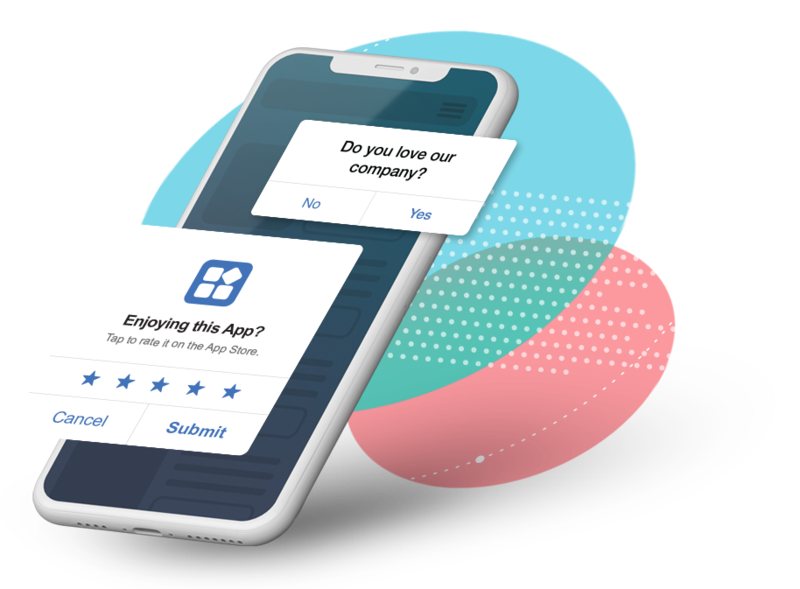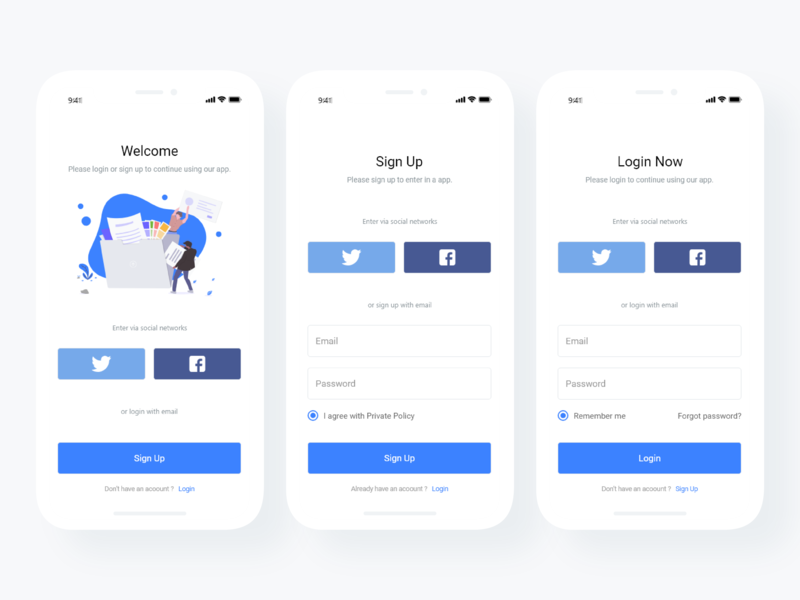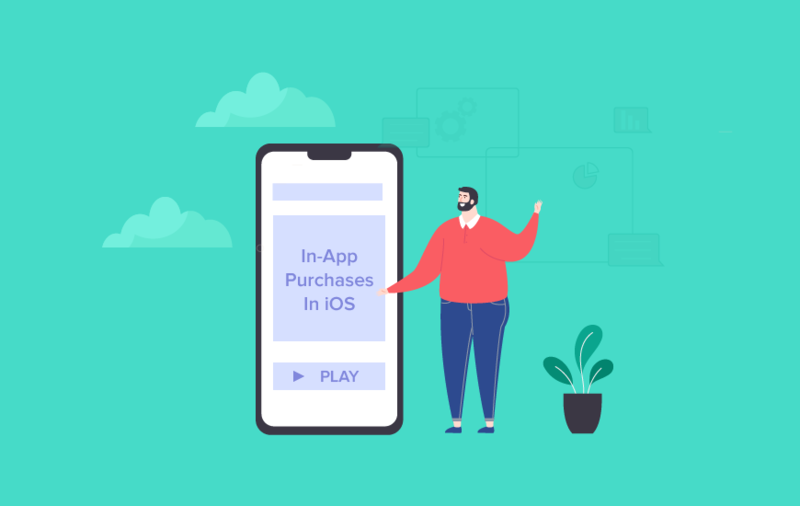30 Ways to Increase Your Mobile App Conversion Rate
Previously, we discussed the benchmark of app conversion rate. How’s your app compare with competitors? And, how to increase your mobile app conversion rate?
Conversion rate is the percentage of users that complete an action. Here’s the conversion rate formula:
Conversion rate = (No. of conversions ÷ No. of [Action]) X 100
Conversion Rate Optimization (CRO) is critical for digital marketing. For different “Action”, this post shows you 30 ways of increasing your conversion rate, including increase app click-to-install conversion rate, improve install-to-register conversion rate and boost IAP conversion rate.
Let’s dive in.
Contents
- Part 1: How to Increase App Click-to-Install Conversion Rate
- 1. Communicate Your Value Proposition Clearly
- 2. Market Your iOS and Google Play Apps Separately
- 3. Utilize App Store Keyword Optimization
- 4. Leverage Localization
- 5. Perform A/B Testing
- 6. Get More and Better App Reviews
- 7. Improve Your Category Ranking
- 8. Reduce your App Size
- 9. Personalize Your Ads
- 10. Promote Your App Traditionally, Too
- Part 2: How to Increase App Install-To-Register Conversion Rate
- Part 3: How to Boost App IAP (In-App Purchases) Conversion Rate
- 1. Respect Psychological Price Barriers
- 2. Follow color philosophy
- 3. Visualize IAP Content
- 4. Introduce your Premium Content during Onboarding
- 5. Let Users enjoy Premium Content without Paying
- 6. Offer Consumables
- 7. Integrate Rewarded Ads
- 8. Recommend Purchase at Right Time
- 9. Optimize Your IAPs for Search in App Store
- 10. Continuously Analyze and Adjust Your IAP Strategies
- Final Thoughts
Part 1: How to Increase App Click-to-Install Conversion Rate
1. Communicate Your Value Proposition Clearly
Your app should supply a special advantage for the potential or current customer who is downloading (and using) the app. When the potential users first meet your app, you should immediately show the core value of your app clearly. This way, they will understand why they are being requested to download, register and even purchase.
2. Market Your iOS and Google Play Apps Separately
The interface of the app store and the Play Store is different and therefore you should use them accordingly to improve the conversion of the mobile app. Here are some posts may be helpful to increase app conversion rate in App Store or Play Store.
- How to Create Great App Preview Videos for iOS Apps
- Google Play Feature Graphic Best Practices and 10 Examples
- App Icon Size and Best Practices for iPhone and Android
- 2021 App Store and Google Play Screenshot Design Guidelines
3. Utilize App Store Keyword Optimization
Using appropriate “keywords” in titles, descriptions, and other heads results in better app search engine rankings and better conversion rate.
4. Leverage Localization
Mobile App Localization is the process of adapting local geographical areas, cultures, and influences to appeal to different audiences from various locations. This step is necessary for app owners who want their products to grow globally and want to have an international presence. This naturally increases the number of final consumers you are serving and the number of downloads as well.
5. Perform A/B Testing
The App Store and Google Play are dynamic. What works now might not work next month, which means you should be testing frequently in order to learn and evolve with the market. For android developers, you can use Google Play Store Listing Experiments to do the A/B test.
6. Get More and Better App Reviews
User reviews are a powerful and cost effective method to persuade users to convert.
Both your app’s average rating and its number of reviews impact its conversion rate. Users are less likely to download an app that has bad reviews. Similarly, an app that has a good score but only a handful of reviews is less credible than an app with the same score and thousands of reviews.

7. Improve Your Category Ranking
When you view an app’s profile, both Apple and Google show the app’s ranking in its category. This can have an impact on your conversion rate: The higher your rank, the better you will be perceived by users, and the more likely they are to download your app.
8. Reduce your App Size
According to the report by Google, if an app-size is more than 150 MB, which was earlier 100 MB, the chances of its installation is going to be lowered by 30%. Also, for every 6 MB expansion in size, the install conversion rate could drop by 1%. As per the research, 65% of people would not install the app if they find out an app is too large. They will avoid such apps due to high consumption of internet data and also stored more space.
9. Personalize Your Ads
Avoid meaningless ads. For someone in the mobile world, it can’t be as annoying as their activity being interrupted by meaningless and annoying ads. Make your ad spend on interesting ads. Focus on channels that interest your users. Analyze them and invest in the types of ads that interest them the most. Otherwise, you will spend on advertising to drive your users away and leave bad brand reputation which is harmful for high conversion rate.
10. Promote Your App Traditionally, Too
Lastly, promote your app on multiple platforms. Use traditional promotion techniques, print media, word of mouth, and anything you can use to attract users. Nothing is surprising about the benefits of old school branding and promotion. In these ways, you can build brand awareness and trust which can increase your app download conversion rate indirectly.
Part 2: How to Increase App Install-To-Register Conversion Rate
1. Cut the Signup Process Short
When a new user browses through your app, the most irritating thing they have to face is to fill in a long signup form.
They have to go through this intense process and share their information with you to even get a look at your product. This can push your prospects to close the app and uninstall it.
Every field you ask them to fill increases friction. The best thing you can do to improve conversions is to get rid of as many fields as possible. Keep in mind that don’t ask too many questions for a new user.

2. Using Auto-fill
Using auto fill tools, reduce time and effort while filling out the form and also reduce input errors.
3. Communicate Errors Clearly
If users fail to fill in a mandatory field or do something wrong, be very clear about it.
Implementing social login is one of the quickest wins around for driving up your sign up conversion rates and widening your funnel.
Social login makes it super simple to sign up for a new product. You reduce friction by providing 1-click sign up rather than having to fill out multiple form fields, put in your email and select yet another password.
5. Remind The Value of Your App at Registration
When a visitor sees your form, they should be able to digest the benefits of signing up almost instantaneously.
The color of your CTA button has a major impact on conversion rate. Think of the button design/color as a visual cue that helps your prospects find the button. In other words, it answers the question, “Where should I click?”
7. Localization
Clearly you need translate your sign-up form to a local language of your potential leads. However, it is important to conduct an A/B testing in order to find out which copy is more efficient for a particular region.
8. Remove distractions on your signup form
Once somebody is on your signup page or on your popup form, remove any other possible distractions, including links that go elsewhere, images and copy that don’t relate to what they’re signing up for, etc.
9. Get Rid of CAPTCHA
While captchas do a good job of filtering spam, nobody likes them. One study shows that they actually have a negative impact on conversion rates – losing around 3% of total conversions.
10. Evoke User’s Mind
Nielsen research finds that while most consumers download dozens of apps for smartphones and tablets, very few apps are actually being utilized across mobile devices.
In this case, make sure reduce your app size to make it download quicker. Otherwise, users will “forget” you app. If users forget your app, use ads or other marketing methods to let them remember you again.
Part 3: How to Boost App IAP (In-App Purchases) Conversion Rate
1. Respect Psychological Price Barriers
When validating prices, users are prone to psychological biases. They judge prices primarily by the first digit (the digit on the very left). Because of that, they perceive $19.99 as much more beneficial than $20, although the price difference is only one cent. The perceived difference is even bigger when they compare one-digit prices like $9.99 to two-digit prices like $10.
Therefore, when planning your pricing strategy, you should respect these psychological price barriers. Set your IAP prices slightly below these barriers, so users will perceive them as better deals than prices slightly above these barriers. For instance, go for $9.99 instead of $11.99, and for $19.99 instead of $20.99.
2. Follow color philosophy
Pay attention to how your in-app purchase content is presented, every tiny detail of it. Among other things colors significantly influence customers’ purchasing behavior. A/B testing methodology shall present you best colors and their combination to strengthen IAP conversion rate.
Don’t expect any major UI redesigning. The change of the “Buy” button color might do the trick.
3. Visualize IAP Content
Make clear to users what they buy by visualizing your IAPs’ content. Show the items that the packages contain. For consumables, make the single IAPs distinguishable.
Make sure to display your IAPs either in ascending or descending order. I recommend to start with the cheapest and display the other packages in ascending order. If you start with the most expensive, the high prices might put off some users. Showing them affordable packages first reduces this risk.
To make users familiar with your app, you should have an onboarding process or a tutorial that explains its functions. It makes perfect sense to include your in-app currency during this process. Explain to users the following points:
- how to use your in-app currency
- which benefits it provides
- how to navigate to your in-app shop
Users who are not sure about the benefits of premium currency or premium content might shy away from purchasing it. Giving them the chance to test these benefits can convince some of them to buy and result in a higher payer conversion.
There is a common approach to let users learn about the benefits of a subscription: Give them a free trial.
6. Offer Consumables
Consumable in-app purchases are items that are used once and then disappear and would have to be repurchased again (e.g. coins, power-ups, etc.), while non-consumable items are purchased once and offer you an advantage or access to something forever (e.g. access to locked levels).
At present, consumable items contribute the most to the overall revenue compared to other kinds of in-app purchases.
7. Integrate Rewarded Ads
Mobile application users who engage with rewarded ads — which ask users to participate with ads, videos or surveys in exchange for a reward within the app — are 4.5x more likely to make an in-app purchase than those who don’t, according to a study by Tapjoy, which connects mobile advertisers with game developers.
8. Recommend Purchase at Right Time
Time plays a huge factor when it comes to a user’s purchasing decisions. That’s why you should make sure to deliver the items in the form of purchase recommendations when you feel like they need it the most to increase the chances of them going for it.
For instance, if a player can’t pass a level after multiple times, offer them to buy a power-up that would make it easier for them to do so.

9. Optimize Your IAPs for Search in App Store
In Apple app store, each IAP has a 30 character-long title and 45 character-long descriptions. The best way to optimize it for search is using the relevant keywords for your app in your IAP information.
10. Continuously Analyze and Adjust Your IAP Strategies
Provided your app is already successful, under current market conditions with multiple rivals you shall never stop constantly optimizing your service.
Periodically, every developer should ask himself three “magical” questions:
- What is the way to improve my IAP strategy?
- What is a technique to come up with a more appealing in-app purchase content?
- What could be a tool to make my content easier to buy?
Final Thoughts
There are many definitions for conversion rate but we have successfully expressed the most concern conversion rate by app developers and marketers, including how to increase click-to-install conversion rate, install-to-register conversion rate and IAP conversion rate.
Are there practical tactics we missed out? Tell us below.
